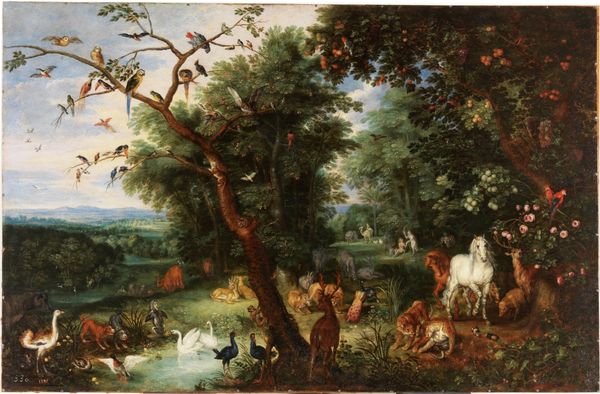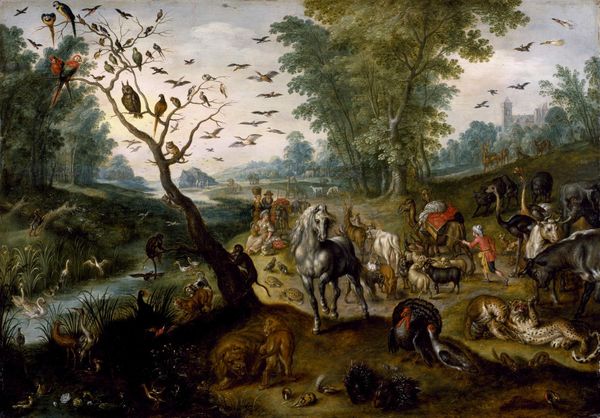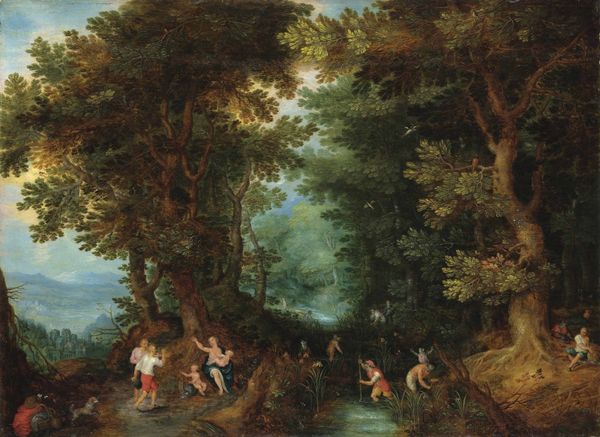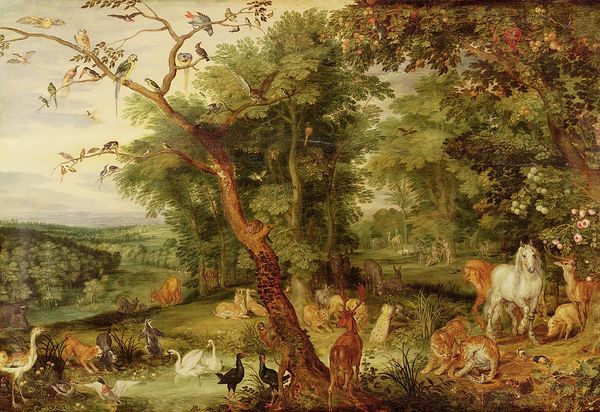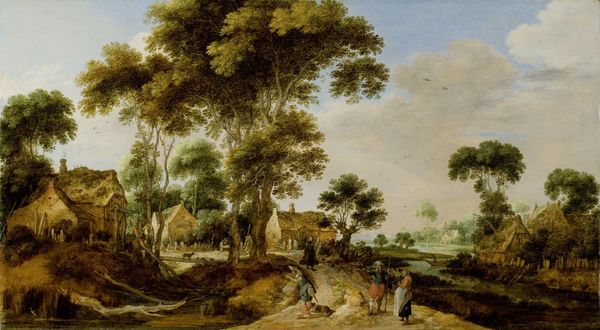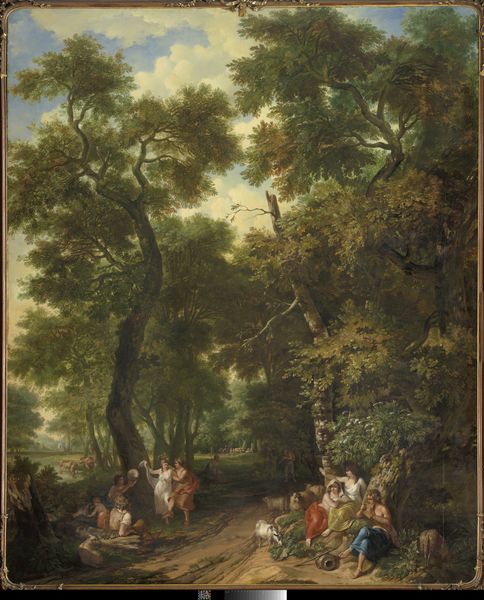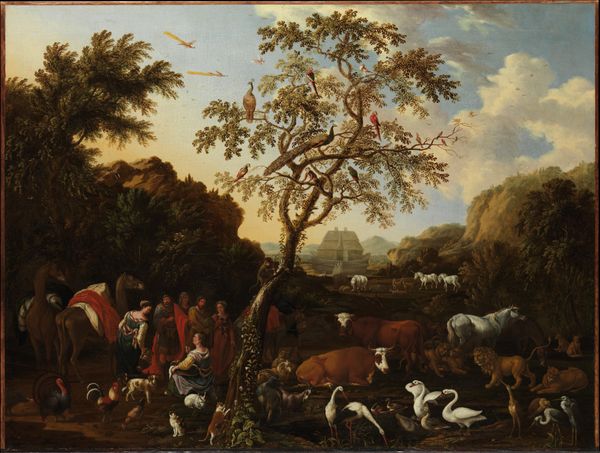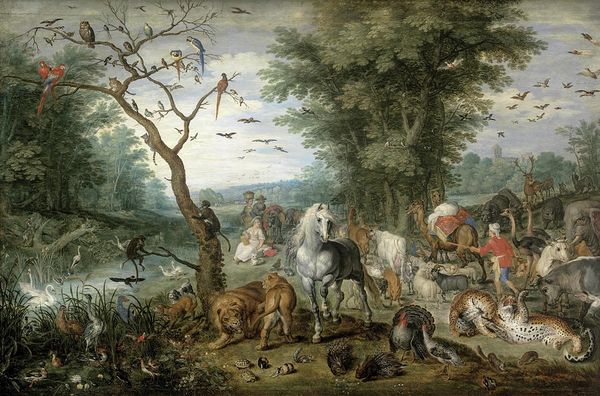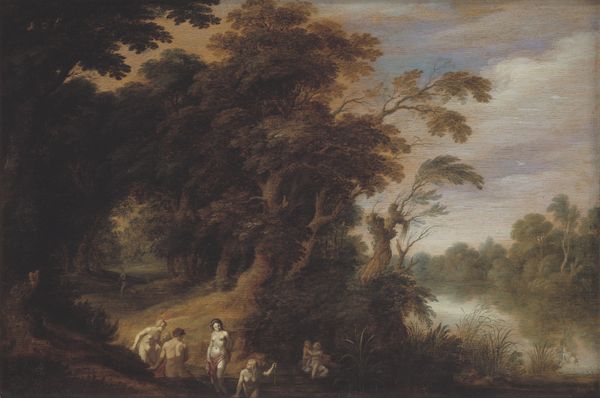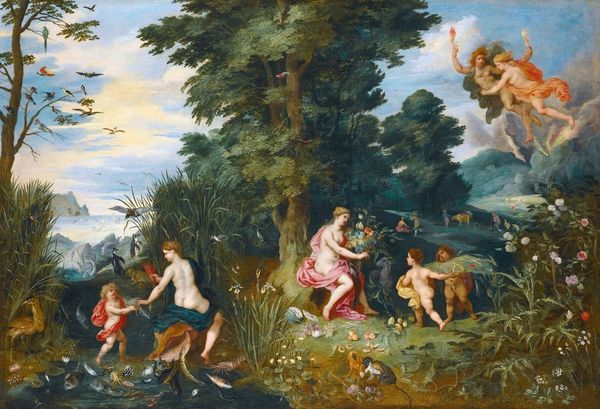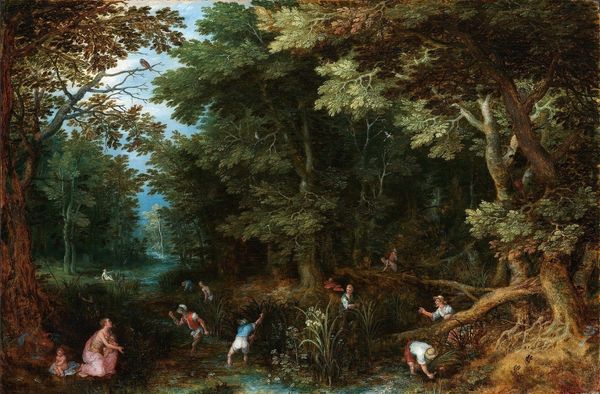
oil-paint
#
narrative-art
#
baroque
#
oil-paint
#
landscape
#
figuration
#
oil painting
#
genre-painting
#
history-painting
#
realism
Copyright: Public Domain: Artvee
"Paradise" was painted by Jan Brueghel the Younger, who was born in Antwerp, during a time when the concept of an earthly paradise resonated deeply with the social and religious ideals of the 17th century. Brueghel presents an idyllic vision of nature, teeming with diverse animal species coexisting peacefully. The composition reflects the influence of humanist thought, which emphasized the harmony and balance of the natural world, and the painting invites you into a space untouched by human corruption. Yet, if we consider this image through a postcolonial lens, this paradise, abundant with exotic fauna, also echoes the era's fascination with exploration and colonization. The artist, knowingly or not, participates in a visual vocabulary that both celebrates nature's bounty and subtly underscores Europe's expanding global reach. The emotional depth of "Paradise" lies in its promise of an unspoiled world, a longing that persists even as we recognize the historical complexities embedded within its creation.
Comments
No comments
Be the first to comment and join the conversation on the ultimate creative platform.
